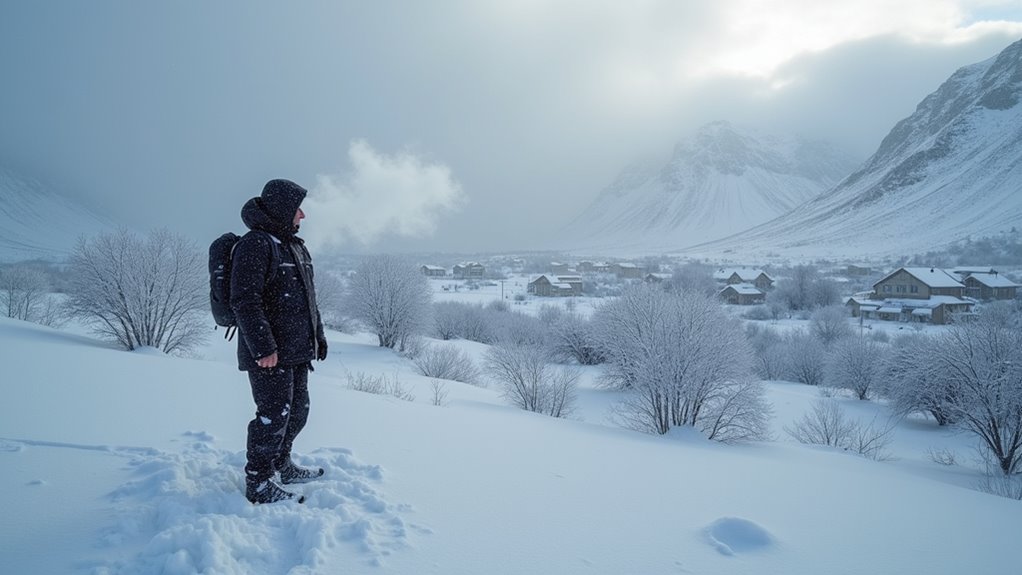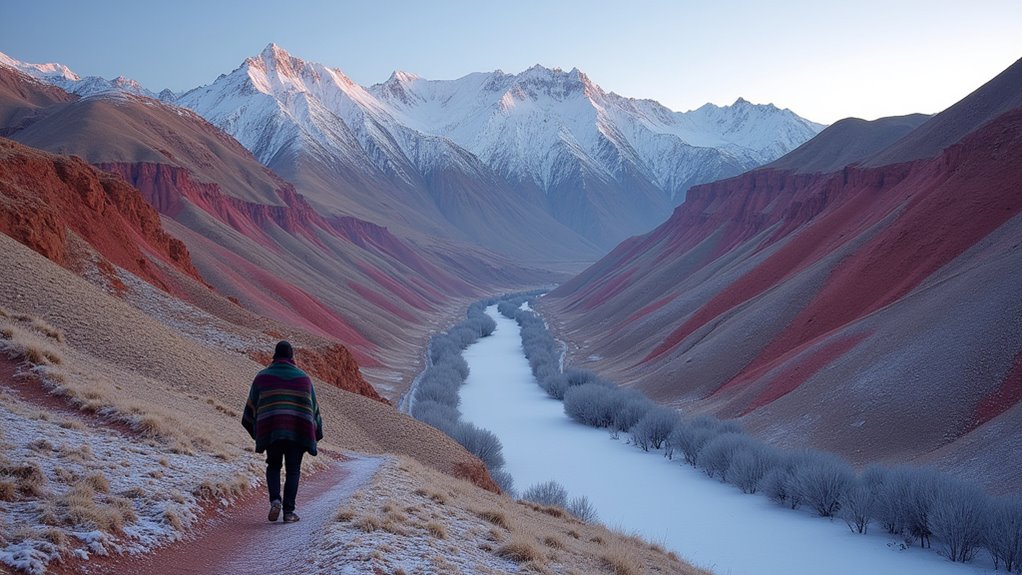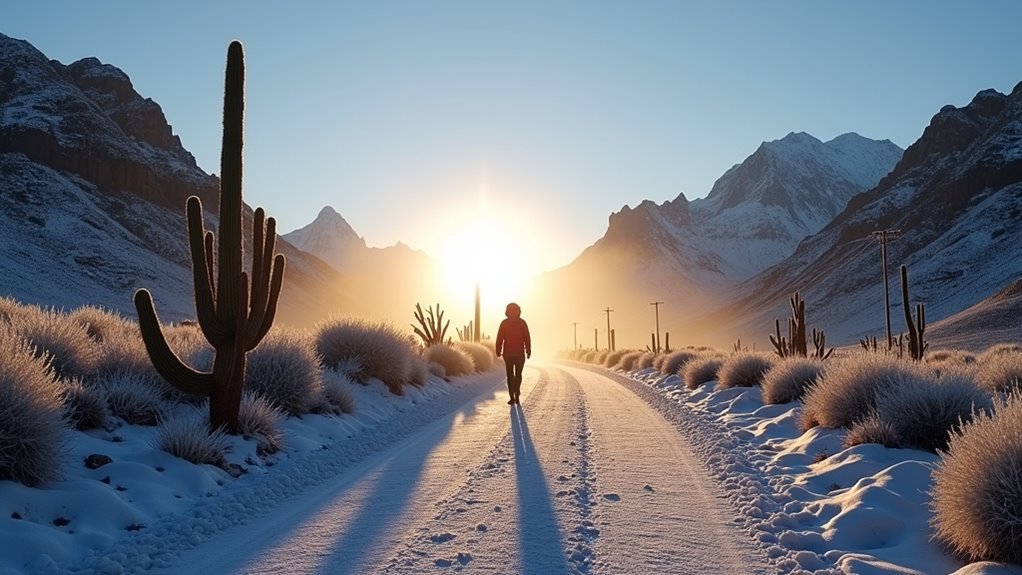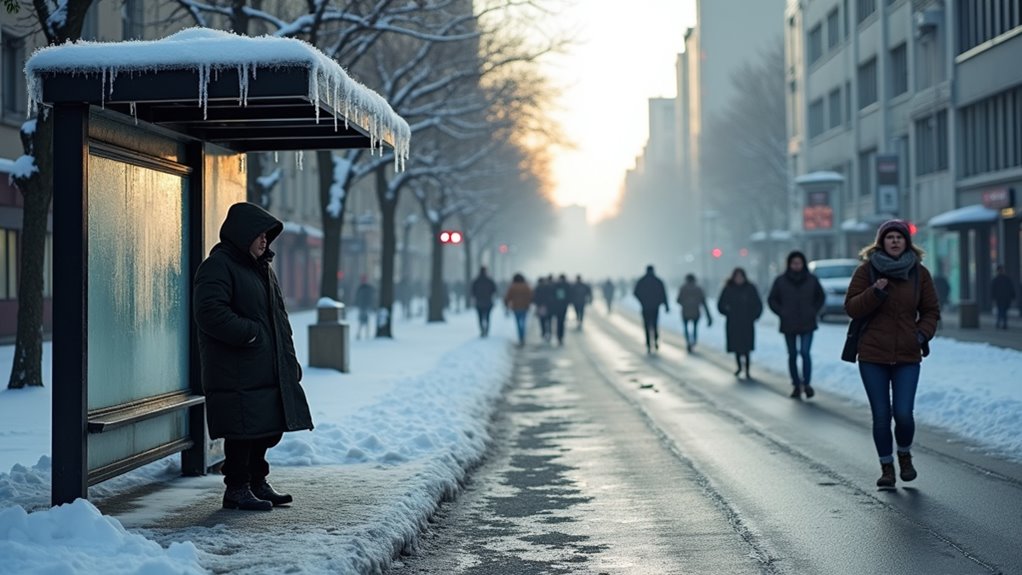Physical Address
304 North Cardinal St.
Dorchester Center, MA 02124
Physical Address
304 North Cardinal St.
Dorchester Center, MA 02124

Andes-born chill permeates these seven Argentine locales where residents battle extreme temperatures that transform daily life in surprising ways.
Argentina’s coldest places to live include Patagonia, where temperatures can plummet to -31°F with harsh winds; the high-altitude Puna Region with extreme day-night fluctuations; Quebrada De Humahuaca‘s frost-prone valleys; La Rioja Province with severe cold fronts; Catamarca’s dramatic temperature swings; the isolated Sierra Mountains where winter can mean complete seclusion; and Buenos Aires, where inadequate infrastructure makes even mild cold feel worse. These regions each present unique challenges that demand specific preparation strategies for year-round comfort.

While most travelers associate Argentina with tango and the vibrant streets of Buenos Aires, Patagonia reveals the nation’s surprising frigid side. In this remote region, winter temperatures typically hover between 36°F and 43°F during daylight hours, plummeting to 28°F or lower at night.
You’ll find the most extreme conditions in the plateaus of Santa Cruz and Chubut, where temperatures have dropped to a bone-chilling -31°F. Add the notorious Patagonian wind, which can make it feel 30°F colder, and you’re experiencing cold that occasionally rivals Antarctica itself.
If you’re planning to visit or live here, you’ll need serious cold-weather gear year-round. The east side of the mountains offers less protection from the elements, making for harsher conditions than the western regions. Residents and visitors must be vigilant about sun exposure despite the cold temperatures, as Patagonia sits beneath one of Earth’s largest ozone holes.
Patagonia might challenge your cold tolerance, but Argentina’s Puna region takes extreme temperatures to another level entirely. This high-altitude plateau sits at nearly 13,000 feet in the Central Andes, experiencing the world’s most dramatic temperature swings – from 86°F during the day to a bone-chilling -22°F at night.
You’ll find a landscape where frost can occur any month of the year. The subtropical high pressure system that dominates this area creates an environment of intense climate variability. The thin atmosphere provides little buffer against the sun’s intensity by day or the rapid heat loss after sunset.
The region’s extreme aridity compounds these harsh conditions, with less than 8 inches of annual rainfall and persistent strong winds.
If you’re considering visiting this remote area, prepare for conditions that have shaped one of Earth’s most uniquely adapted ecosystems.

As you journey through the Quebrada de Humahuaca, you’ll encounter a place where frost meets cultural heritage in Argentina’s northwestern highlands. This UNESCO World Heritage site experiences temperatures ranging from 28°F to 66°F throughout the year, with significant day-night temperature fluctuations.
A land where frost and heritage intertwine beneath Argentina’s dramatic highland skies.
The region’s unique climate features:
The area experiences very minimal rainfall during its dry season, with July receiving as little as 0.1 inches of precipitation on average.
Despite these challenging conditions, locals have adapted their lifestyles, and the area remains popular with travelers seeking both natural beauty and cultural experiences.
Moving northeast from the frost-covered valleys of Humahuaca, you’ll encounter La Rioja Province, a land where dramatic temperature shifts define the local experience. Though known for scorching summers, winter nights here deliver surprising cold that contrasts sharply with warm days.
While daytime winter temperatures might reach a comfortable 30°C, nighttime can plunge below freezing when cold fronts sweep through. This thermal amplitude—sometimes a 20°C difference within 24 hours—catches many visitors unprepared.
The semi-arid climate means clear skies intensify both the daytime heat and nighttime chill. July stands out as the province’s coldest month with average lows around 41°F and highs of 66°F.
The province’s mountainous regions experience the most severe winter conditions, though snow remains extremely rare. If you’re planning a visit, pack for both extremes, especially from May through August when these cold fronts are most frequent.

Nestled between the towering Andes and eastern lowlands, Catamarca Province showcases some of Argentina’s most dramatic temperature fluctuations. You’ll experience winter nights that plunge below freezing, while daytime temperatures remain surprisingly mild due to the arid climate. Climate change projections indicate that these fluctuations may become more extreme, with high hazard classifications for heat events in the region’s future.
While Argentina conjures images of sunny pampas and vibrant cities, the rural Sierra Mountains tell a far different story during winter months. You’ll face temperatures plummeting to -30°C at higher elevations, with permafrost dominating areas above 3,800m.
Beyond the tango and sun lies Argentina’s Sierra Mountains—a frigid winter realm where -30°C temperatures transform survival into an art form.
If you’re living in these remote communities, you’ll quickly learn that preparation means survival. Wood-burning stoves become lifelines as snow and ice cut off access roads, sometimes for weeks. You’ll need to stockpile essentials and master food preservation techniques. The Andes mountain range significantly influences climate, creating extreme temperature variations and harsh winter conditions in these isolated highland settlements.
The unpredictable Zonda wind adds another layer of complexity—suddenly warming temperatures to 30°C before disappearing just as quickly.
While you’ll enjoy breathtaking scenery and tight-knit community bonds, you’ll also contend with unreliable communications, limited emergency services, and the psychological toll of isolation during the coldest months.

Unlike Argentina’s mountainous regions, Buenos Aires presents a different kind of winter challenge. While temperatures rarely drop below 50°F, the city’s humidity makes the cold feel more penetrating, especially with limited indoor heating options.
You’ll face these unique urban cold challenges:
The coldest month is July when temperatures typically reach daily lows of 47°F and highs of only 57°F.
The city’s winter isn’t extreme by temperature standards, but inadequate infrastructure makes Buenos Aires’ mild cold surprisingly challenging for residents.
You’ve now discovered Argentina’s coldest residential locations, from Patagonia’s Antarctic-like conditions to Buenos Aires’ urban chill. When visiting these regions, don’t forget your thermal underwear and modern heaters—unlike the ancient Romans who’d just pile on woolen togas and hope for the best! Whether you’re planning a move or just traveling, understanding these extreme climates will help you prepare properly for Argentina’s frosty challenges.